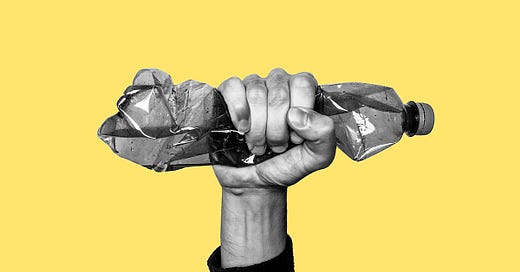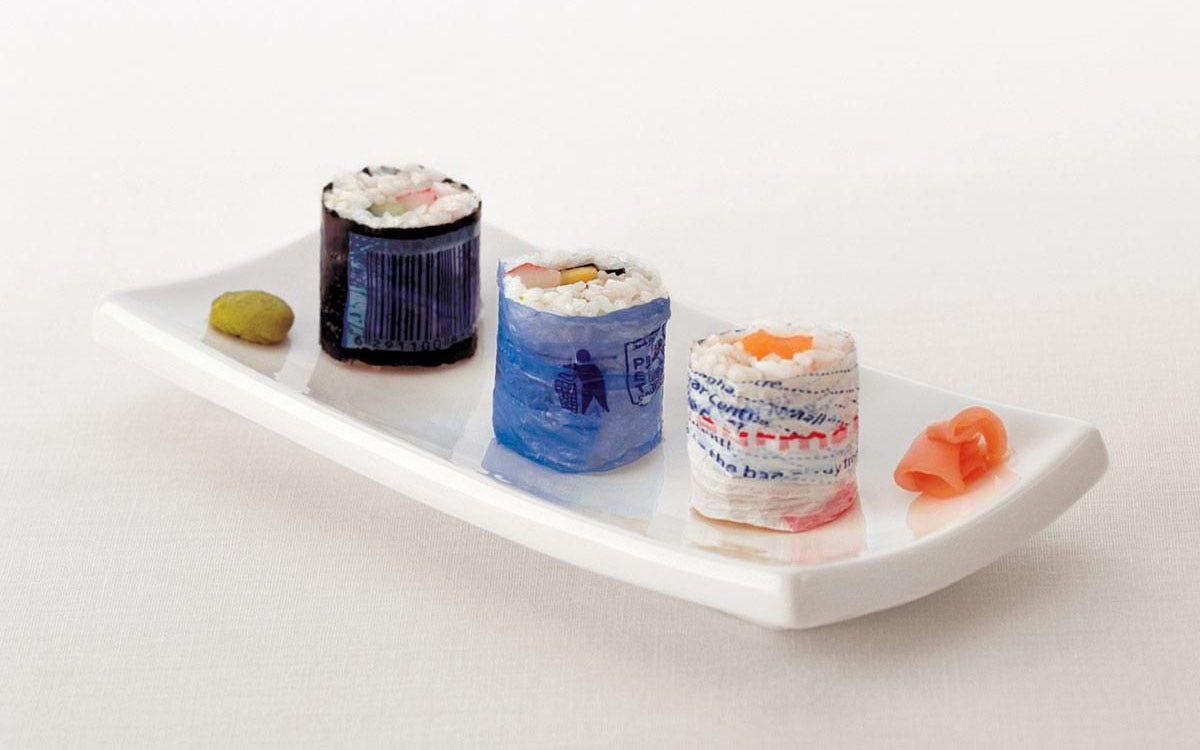why plastics are killing us
We’re using so much plastic, it’s now literally in our blood. For our own sake, we need to find an alternative, and fast.
According to an ancient Greek proverb, societies only become great when old men plant trees in whose shade they know they’ll never sit. By this measure, our current society is an abject failure, as far too many old men are actively cutting down said trees as their kids and grandchildren try to find shade on blazing summer days.
One of the clearest examples of this generational sabotage is the virulent resistance to phasing out plastics and chemicals known as PFAS, which have been consistently linked to significantly lowering fertility over the past half century. Which is ironic, with the panic over declining birth rates across the world as our tycoons throw tantrums that they won’t have a trillion indentured human servants anytime soon.
And while there’s at least some pressure building to clean up all the PFAS chemicals found in materials like teflon, plastics remain a disaster, so much so that civilizations millions of years from now would know we existed by fossilized plastics in sediment lines, the steps taken to limit how much plastic we use have been limited at best, and scientists are worried that we’re now eating and drinking plastics that we’re finding in every nook and cranny of the environment.
These microscopic plastic chards are now being linked with increased risks of stroke, heart attack, dementia, and some types of cancer. Which makes sense. They’re tiny, sharp, flexible fibers that literally get in the way of everything they touch, and release toxic byproducts when they do start to break down, acting like a corrosive, rock-filled sand in our biological gears, grinding some things to a halt, breaking others, and just generally grinding down things that shouldn’t be touched.
Simply put, ingesting up to a few grams of petroleum byproducts per week while they release thousands of harmful chemicals as they break down into ever smaller fibers and pieces, is just not safe for us. They’re replicating the very same problems caused by asbestos fibers and carbon dust before them, which rub and scrap lung cells open, and get in the way of normal metabolic and bodily functions for decades on end, also suppressing our immune systems by overtaxing them and damaging lymph nodes to trigger dangerous inflammation linked to cancer and autoimmune diseases.
how “miracle materials” of the past failed us
At this point, we’ve had far too many examples of “miracle materials” that turned out to be anything but not, and the companies that profited off it knew it and lied about it to avoid lawsuits and paying for the extensive cleanup. Lead was supposedly great in fuel, paint, and plumbing until we found out it was a potent neurotoxin. Asbestos was an amazing construction material until it was discovered that — as any lawyer will tell you a few dozen times a day — it causes mesothelioma.
And we’ve already touched on the hidden cost of PFAS in non-stick surfaces, which, by the way, can also cause birth defects among other unpleasantries, and can take a few thousand years to break down. Isn’t cleaning a breeze now? All you needed to do was potentially sacrifice the next few hundred generations for the convenience. And the pockets of the shareholders.
But wait, you might say, can’t we just recycle plastics? Yeah, about that. According to experts, we really can’t. Only a small subset of plastics are actually recyclable, little of what has been recycled finds its way into new products, and most of it is dumped in a landfill. despite what labels and ads imply. Companies which make plastic packaging keep lying to us that if we just put all our plastics into those blue bins, they won’t end up in our soil, water, or our organs, and have zero incentive to correct our erroneous assumptions based on their promises.
In fact, they have every possible motivation to lie to us and brag about new recycling ideas that ultimately don’t do much, and may actually be making things worse. Their goal isn’t to actually fix their mess. It’s to keep their business going profitably and as long as possible by telling us that solutions to the problems they caused are solvable and they pinky swear that they’re working really hard on a fix.
So, if you ever wondered why scientists and environmentalists have been panicking about plastics in, well, everything while staring at the friendly “recycle me, keep the planet clean!” message on your bottle of soda, now you know. Only 9% of all plastic waste gets reused, so that bottle has less than a one in three chance to be anything else since plastic packaging requires a certain level of purity to pass quality control, and pellets of recycled material often don’t make the cut.
the necessary search for what comes next
The middle of the past century saw an explosion of new, generally fossil-fuel derived chemicals being used in every facet of life, with scientists and businessmen so eager to apply and monetize their discoveries that any question of long term safety instantly fell by the wayside. There were problems to solve, markets to serve, and an emerging middle class with an insatiable appetite for making life more convenient.
Lead meant no more engine knocks, easy to shape, durable pipes to carry water, and moisture-resistant paint. Asbestos provided fantastic insulation and was an excellent fire retardant. PFAS made cleaning way easier with slick surfaces on cooking utensils, furniture, and in cars. Plastics meant clean, cheap, perfectly sized packaging in pretty much any form you could imagine.
While basking in profit and accolades, it was a very bitter pill to swallow that lead was literal poison that deeply affected the problem-solving and temper regulation abilities of several generations, that asbestos caused cancer and lung disease, that PFAS led to lower sperm counts and birth defects, and that plastic waste is now omnipresent and isn’t going anywhere for centuries, if not millennia without extreme effort on our part, logistically and financially.
So bitter in fact, that companies did the research, figured out the damage they were doing, and then still fought tooth and nail to downplay or disregard scientific findings showing that their products were dangerous. Having made billions, the last thing they wanted to do was to spend them undoing their own companies’ decades of work and glowing stock prices, settling lawsuits, and cleaning up the planet unless their backs were against the wall.
The bottom line is that we need to move on from plastics and focus on technologies that will allow us to clean up the current mountains of waste. Ultimately, we have no choice but to focus on materials that are truly recyclable, reusable, and break down into inert, safe components. And we also need to worry about buying and using less because otherwise, we flood landfills and groundwater with toxic waste.
Sure, a life of single use everything produced at vast scales was very convenient and the necessary changes will require whole a lot of new regulations, economic metrics, research, and testing, and all of them will be fought tooth and nail by people who run the world with their donations, foundations, and institutes. But ultimately, it’s far, far better for both the environment and our health to live in a world where we finally take our safety and the environment a lot more seriously than we do today.
note: this post was originally published on 07.14.2022 on the old blog. It was updated and expanded with new research, and edited for style.
![[ world of weird things ]](https://substackcdn.com/image/fetch/w_80,h_80,c_fill,f_auto,q_auto:good,fl_progressive:steep,g_auto/https%3A%2F%2Fsubstack-post-media.s3.amazonaws.com%2Fpublic%2Fimages%2F93728edf-9a13-4b2b-9a33-3ef171b5c8d8_600x600.png)

![[ world of weird things ]](https://substackcdn.com/image/fetch/w_36,h_36,c_fill,f_auto,q_auto:good,fl_progressive:steep,g_auto/https%3A%2F%2Fsubstack-post-media.s3.amazonaws.com%2Fpublic%2Fimages%2F93728edf-9a13-4b2b-9a33-3ef171b5c8d8_600x600.png)



Regarding plastics, didn’t Boyan Slat, who founded The Ocean Cleanup, come up with a new way to recycle plastic waste? I was thinking that he figured out how to take old plastic and make it into pellets again, where it could be recycled. Or was this just a marketing gimmick?